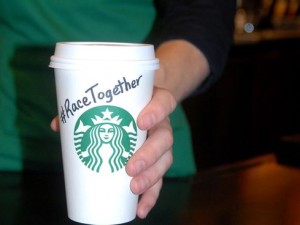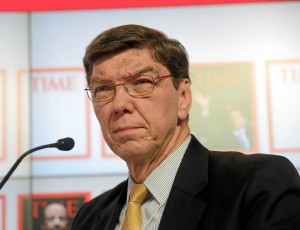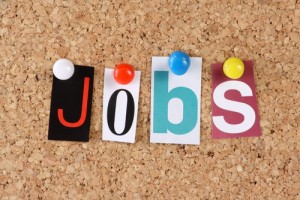Mercifully, Starbucks’ ill-fated “Race Together” message on their cups promotion ended yesterday, drawing a close to an intensely uncomfortable moment not just for the mega coffee company, but also many social media brands.
 In case you somehow missed it because you were ruminating over your losing brackets last week, Starbucks’ altruistic CEO, Howard Schultz, stretched the boundaries of caffeine to initiate a bold idea: starting conversations about racism at his highly successful coffee stores.
In case you somehow missed it because you were ruminating over your losing brackets last week, Starbucks’ altruistic CEO, Howard Schultz, stretched the boundaries of caffeine to initiate a bold idea: starting conversations about racism at his highly successful coffee stores.
The “Race Together” campaign is about striking up discussions about the racial divide and inequality in America – an issue that once again has become a headline-maker during the past year. Schultz’s heart has always been in the right place even as his brand overreached. He has been a champion of major causes over the years, trying to use his coffee stores as the delivery mechanism to make the world a better place.
But the truly tough part of Schultz’s bet was that so much of the onus of “Race Together” fell on his baristas – the mostly young coffee-makers charged with starting these complicated conversations about race.
It’s like asking the disc jockeys to make the pitch to Wall Street investors. They would be enthusiastic but sorely lack the training, the expertise, and the background to have a meaningful conversation at this level. And like baristas, this is not what they were hired to do.
But if you think Starbucks went off-message with “Race Together,” the other brand that suffered collateral damage is Facebook. Once a platform where people could happily reconnect with long lost friends and share family experiences, Facebook has eroded into an often angry, untethered soapbox where anybody can go off to spread their political, social, and cultural ideas – and often their ignorance – with no penalty or price to pay.
Think about Mark Zuckerberg’s original purpose behind Facebook, which he described in his company’s IPO filing three years ago:
“We hope to strengthen how people relate to each other. Even if our mission sounds big, it starts small – with the relationship between two people. Personal relationships are the fundamental unit of our society. Relationships are how we discover new ideas, understand our world and ultimately derive long-term happiness.”
If that sounds like the Facebook of today – often filled with rants, ire, hated, and misconception, and political raves – we’re reading very different posts.
Perhaps Zuckerberg never bet on how humor could turn to snark which manifested itself into anger which morphed into rage. This is not the same Facebook we first encountered when trying to find Jonah who we hung out with in high school.
Both Starbucks and Facebook are showing signs of having lost sight of their original missions – the jobs that consumers hire them to do. That’s the philosophy of Harvard professor and marketer  extraordinaire Clayton Christiansen, and it’s a great rule of thumb for any company or brand.
extraordinaire Clayton Christiansen, and it’s a great rule of thumb for any company or brand.
People who know me well know that I’m a Starbucks uber P1 – what the company refers to as a “super regular.” I’m in and out of their stores a couple times a day – every day – like clockwork. And while I enjoy a stimulating conversation about politics, race, equality, and baseball as much as anyone, this is not why I walk into Starbucks every morning.
In Starbucks’ case, that “job to do” is starting my day with a jolt of rich coffee, a friendly barista greeting, and perhaps an occasional meeting with a colleague or friend. It’s a relaxing place where I might catch up on email or read The New York Times.
But I don’t hire Starbucks to initiate controversial conversations about important social issues. And over the past several days, I’ve been in and out of four different stores where “Race Together”was seemingly nonexistent. I don’t know what that says about Howard Schultz’s yank with his rank and file, but I think it means that this was a job most of his baristas didn’t want to do, weren’t capable of, or both.
And it’s a reminder to all of us who manage and oversee brands that there are limitations to what we can and should be doing. We talk about growing and expanding our brands, but there’s a point where overreaching occurs.
That’s why research should be playing an even more important role in helping us define radio’s “new job requirements” From station-commissioned proprietary research to the Infinite Dial studies to our Techsurveys, the goal is to better understand why consumers are hiring radio in 2015.
We can and should be focused on making our communities better places. Charitable efforts, fund-raising for good causes, and helping listeners in need are all part of what has always made radio special. It’s what sets many stations apart from digital competition. That may not be the main reasons listeners hire us, but it’s in “the pyramid” somewhere.
But we also need to be cognizant of what consumers are hiring us to do. These days – whether we accept it or not – they are changing their jobs-to-do orientation about music and talk  radio. And we’d better get the message.
radio. And we’d better get the message.
Are they hiring us to provide playlists of tightly defined formats with very little personal curation, discovery, or surprise? Or are services like Pandora and Spotify doing a better job in this area – without making consumers endure 12 minutes of commercials an hour?
Are they hiring us to spew extreme talk programming at a time when America’s values are undergoing change in areas that range from immigration to gay marriage to marijuana legalization to gun control?
Reading the room, learning why consumers are hiring broadcast radio stations among the many different options available, and gaining an understanding of our new jobs-to-do mission goes to the heart of broadcasting’s ability to survive and thrive in a rapidly changing media world.
It is hard to say who was more off-course in the “Race Together” controversy started by Howard Schultz – and inflamed by millions of people on social media sites. Both of the CEOs for Starbucks and Facebook are well-meaning, responsible corporate leaders. Schultz is trying to use the power of his brand to do good, to increase understanding, and to wake us up to the realities of life in America. Zuckerberg would like to make the world a more engaged, open, and connected place. It’s hard to say whether either is succeeding at times like these as both brands jump the shark of expectation and fall out of position.
As consumers, we have our own decisions to make about where we go and who we partronize. And so do the people who listen to our radio stations.
In a world where change is the only constant and options are abundant, gaining a firm handle on our brands – why people use them and what they expect from them – may be the smartest thing we can do.
After all, isn’t that our job?
- Can Radio Afford To Miss The Short Videos Boat? - April 22, 2025
- Media And Technology In 2025: Believe It Or Not! - April 18, 2025
- In Radio, You Just Never Know - April 17, 2025




There’s also a management component here. Corporate created a “job” for people who were not hired to do it. Apparently, no one stopped to ask of the 23-year-old barista had the social skills to pull this off. What did they expect? “Steve, here’s your Trenta ice tea. And, how about that black/white thing? Crazy, huh?” There is an analogy to radio here. I learned long ago that you cannot fundamentally change people. you can’t make someone funny or a great story teller. You CAN help them enhance their abilities. We hear all the time that radio needs to improve its content but do we have the horses to pull it off? No only the on-air talent but the coaches.
Thanks, Steve. The baristas had the option to bring up the topic – or not. And while I did not personally encounter any that engaged customers, you have to believe that many had to find the initiative awkward and perhaps uncomfortable. My experience is that they are a smart, energetic group that is well-trained in customer service and making coffee drinks. Discussing a high-powered issue like race is a whole different thing. Thanks for commenting.
Great illustration. Companies (aka stations) need to accept what they can do and how to position, accordingly. Yes, it is all about reaching the viable audience but when the content falls off, there goes the brand. Maybe Starbucks could just paste pink ribbons on those race cups and support Breast Cancer runs.
You need to know your brand strengths, limits, and expectations. Thanks much, Clark.